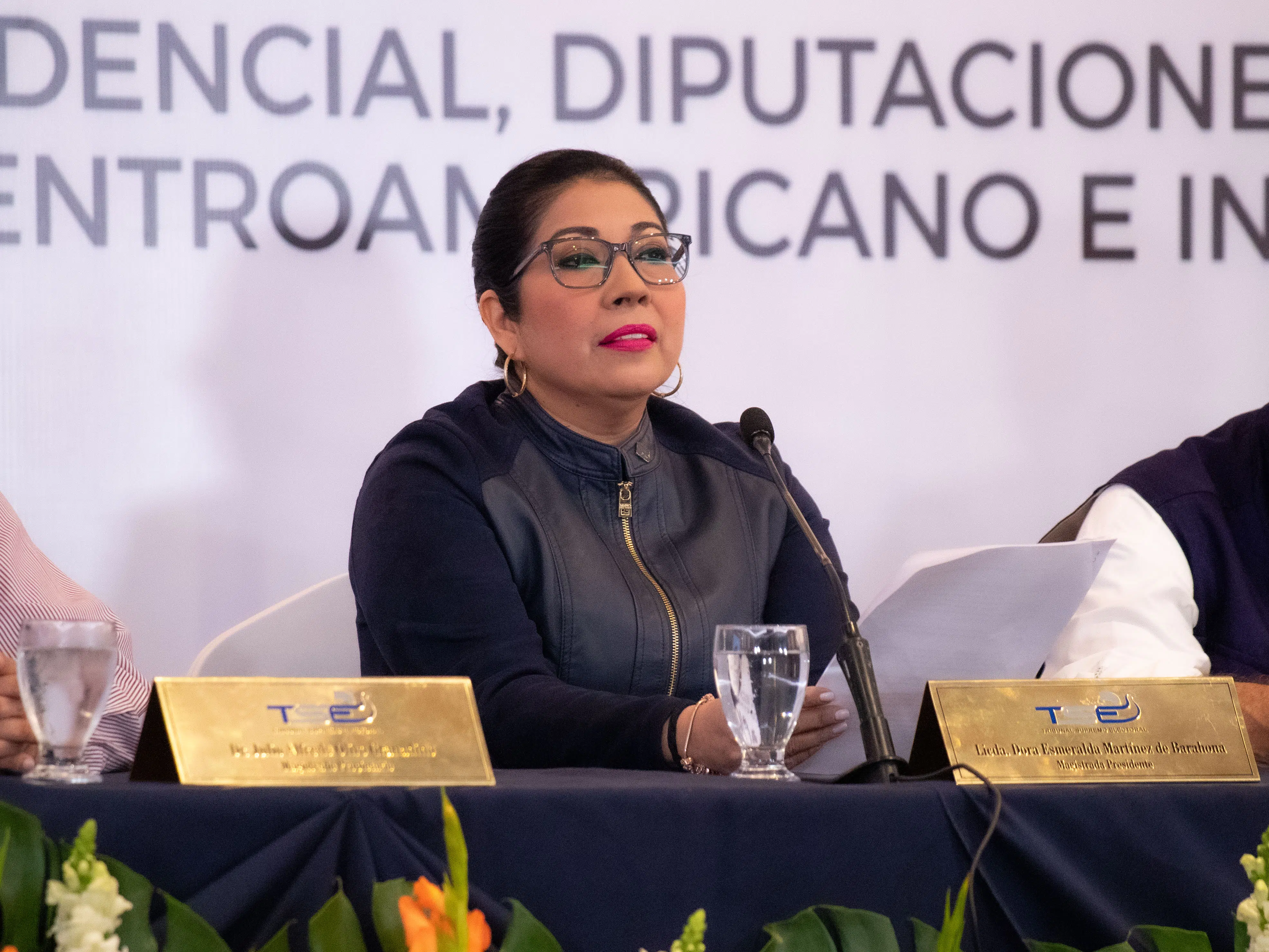The Supreme Electoral Court (TSE) reset the computer system for the processing of preliminary results of the March 3rd elections this afternoon, which is used to receive the data from the scrutiny carried out by the Election Monitoring Board (JRV).
The magistrate president of the TSE, Dora Esmeralda Martínez, said that the members of the JRV “are the guarantors of transparenting that process,” respecting the vote of the population and “doing that count according to the law,” she said.
The reset implies that the database does not have any previous records and is ready to start receiving the certificates transmitted by the voting tables.
“The action of resetting these systems ensures that the votes to be counted will be solely and exclusively those received from the JRV through the corresponding closing and scrutiny certificates” — Dora Esmeralda Martínez, president of the TSE
Ignacio Villagrán, head of the TSE’s Computer Services Unit, said that the application has an “off-line” mode, which is what starts up the mechanism and that the TSE trained the members of the JRV, and the unit trained the auxiliary transmission staff. “We are betting on training to minimize all those events that may be in the territory and that these will facilitate transmission,” he said.
He mentioned that it is the same infrastructure that was used in the February 4th elections. “And that’s why it’s necessary to ensure that we don’t have any files or records of the previous event,” he said.
The external audit of the TSE, the General Secretariat of the Court, and the Attorney General’s Office participated in the event.
After the voting closes, the number of remaining, invalidated ballots is determined, and the votes are scrutinized, which are the data entered into the electoral registration and transmission system. Upon completing the respective procedure, the digitized image of the closing and scrutiny certificate “will be remotely transmitted” to the National Center for Processing of Results, said Martínez.
The magistrate president said that “the vast majority of voting centers” were opened at the stipulated time, and by 8:00 in the morning, all 1,595 were open in their entirety.
She added that some “isolated” incidents in the installation of the JRV were “overcome.” She pointed out that the elections have been taking place “in complete normality” and called on “those who have not yet voted” to approach the voting center during the remaining time of the electoral day.
TSE realiza puesta a cero del sistema de transmisión de actas
El Tribunal Supremo Electoral (TSE) realizó esta tarde la puesta a cero del sistema informático para el procesamiento de resultados preliminares de las elecciones del 3 de marzo, el cual se utiliza para recibir los datos del escrutinio que realicen las Juntas Receptoras de Votos (JRV).
La magistrada presidenta del TSE, Dora Esmeralda Martínez, dijo que los miembros de las JRV “son los garantes de transparentar ese proceso”, respetar el voto de la población y “haciendo ese conteo conforme a la ley corresponde”, dijo.
La puesta a cero implica que la base de datos no cuenta con ningún registro previo y está lista para comenzar a recibir las actas que transmitan las mesas de votos.
“La acción de puesta a cero de estos sistemas garantizando que los votos a contabilizar será única y exclusivamente los que se reciban de la JRV a través de las actas de cierre y escrutinio correspondiente” — Dora Esmeralda Martínez, presidenta del TSE
Ignacio Villagrán, jefe de la Unidad de Servicios Informáticos del TSE, expresó que el aplicativo lleva la modalidad “off line”, que es la que arranca el mecanismo y que el TSE capacitó a los miembros de las JRV y la unidad capacitó al personal auxiliar de transmisión. “Estamos apostando a la capacitación para minimizar todos aquellos sucesos que puedan estar en territorio y que estos nos faciliten la transmisión”, dijo.
Mencionó que es la misma infraestructura que se utilizó en las elecciones del 4 de febrero. “Y por eso es necesario garantizar que no tengamos ningún archivo ni ningún registro de lo que fue el evento anterior”, afirmó.
Participaron del acto la auditoría externa del TSE, la Secretaría General del Tribunal y la Fiscalía General de la República.
Después del cierre de la votación, se determina la cantidad de papeletas sobrantes, inutilizadas y se hace el escrutinio de los votos, que son los datos que se ingresan al sistema de registro y transmisión electoral. Al concluir el procedimiento respectivo, la imagen digitalizada del acta de cierre y escrutinio “será transmitida de manera remota” al Centro Nacional de Procesamiento de Resultados, dijo Martínez.
La magistrada presidenta dijo que “la gran mayoría de centros de votación” fueron abiertos a la hora estipulada y que a las 8:00 de la mañana estaban abiertos en su totalidad los 1,595.
Agregó algunos incidentes “aislados” en la instalación de JRV fueron “superados”. Indicó que las elecciones se han desarrollado “en completa normalidad” e hizo el llamado a “quienes aún no han votado” para que se acerquen al centro de votación en el tiempo que resta para la jornada electoral.

